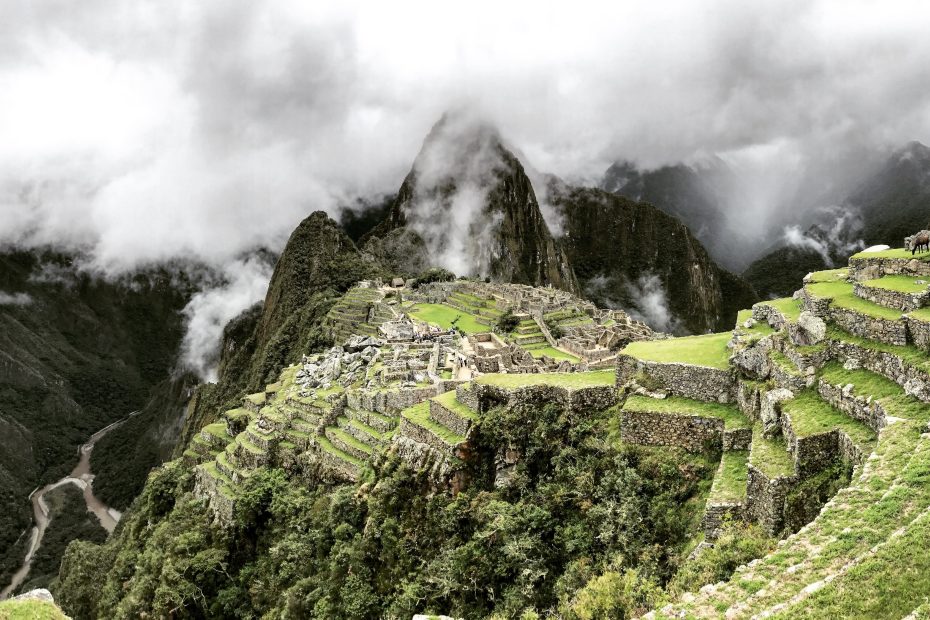| Introduction |
| Nestled high in the Andes Mountains of Peru lies the ancient city of Machu Picchu, one of the most fascinating archaeological sites in the world. Though known locally, Machu Picchu lay hidden from the outside world until its rediscovery by Hiram Bingham in 1911. Since then, it has captured the imagination of millions who have walked its stone passages and gazed upon its peaks shrouded in mist. |
| But centuries before its unveiling, Machu Picchu flourished as a jewel of the Inca civilization. Its exact origins and purpose remain shrouded in mystery, with competing theories about its role for Inca rulers. While many questions persist, its magnificent architecture and integration with the natural landscape continue to give us insight into Inca engineering, agriculture, and spirituality. |
| Theories About Machu Picchu’s Origins |
| The citadel’s original purpose and the identity of its founders have long been debated by historians. Some believe Machu Picchu was built in the mid-15th century as an estate for Pachacuti, the ninth Sapa Inca ruler. Others argue it served as a sacred religious center due to the temple structures and alignment with celestial events like solstices. An additional theory suggests it functioned as a secluded retreat for Inca nobility seeking refuge from the Spanish conquistadors. |
| Regardless of its initial purpose, Machu Picchu appears to have served multiple functions over its history. Combining elite residences, temples, and agricultural terraces, it was likely a multifaceted citadel important to both Inca rulers and local populations. |
| Architecture and Layout |
| Machu Picchu boasts over 150 buildings and structures constructed from polished dry-stone walls. The site is divided into areas like the Sacred Plaza, the Temple of the Sun, royal residences, and storehouses. Advanced engineering is evidenced by the earthquake-resistant stonework and integration with natural formations. |
| The central plaza likely hosted religious rituals and community gatherings. Nearby, the Intihuatana stone served as an astronomic clock aligned to the sun’s movements. Terraced farming areas indicate the city’s self-sufficiency and connection to the land. Overall, the site reflects the Inca’s mastery of architecture while blending seamlessly with the existing mountains. |
| Daily Life at Machu Picchu |
| During its heyday in the 15th and 16th centuries, Machu Picchu was home to about 750 inhabitants including royal family, priests, and farmers. Noble residents likely led a comfortable lifestyle with ample food and luxury goods. |
| Common folk tended farms utilizing innovative terracing and irrigation methods suitable for the Andes terrain. They cultivated staple crops like maize, potatoes, and quinoa while herding llamas and alpacas. In addition to agriculture, inhabitants produced crafts like pottery and textiles from local materials. |
| Rituals and ceremonies were an important part of daily life. Astronomic and solstice celebrations took place in the Sacred Plaza while offerings were left at the many shrines and altars around the city. |
| Abandonment and Rediscovery |
| Within 100 years after the Spanish conquered the Inca Empire, Machu Picchu was abandoned around 1550 AD, possibly due to disease or colonization. Overgrowth consumed the city until it was revealed following centuries of mystery. |
| In 1911, Yale professor Hiram Bingham located Machu Picchu while searching for the last Inca stronghold. His excavations brought the site worldwide attention. In subsequent decades, archaeologists have uncovered skeletons, artifacts, and new areas like nearby llama corrals and housing. |
| Significance as a Tourist Destination |
| Since gaining renown in the early 20th century, Machu Picchu has become Peru’s top tourist attraction with over 1 million annual visitors. As a UNESCO World Heritage Site, preservation efforts strive to protect the ruins from environmental and human impact. |
| Though boosting the local economy through tourism, the influx has also disrupted nearby communities like Aguas Calientes. Managing the crowds while retaining access continues to pose an ongoing challenge. |
| Conclusion |
| Still revealing its secrets over a century after emerging from obscurity, Machu Picchu stands as a magnificent time capsule of Inca society. Walking its stone corridors leaves one with a sense of awe and wonder about the civilization that built this city in the clouds. The mysteries enveloping Machu Picchu beckon explorers to this day and will continue inspiring future generations to unveil its hidden cultural treasures. |
| FAQs |
| – How large is Machu Picchu? |
| – What crops did the Incas grow in Machu Picchu? |
| – How did Machu Picchu remain hidden for so long? |
| – Why was Machu Picchu built so high up in the mountains? |
| – How do visitors get to Machu Picchu today? |

